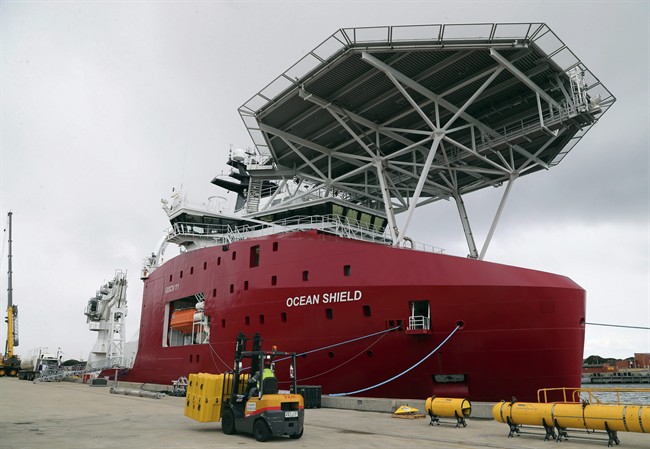SYDNEY, Australia – The hunt for Malaysia Airlines Flight 370 resumed Monday in a desolate stretch of the Indian Ocean, more than six months after the jet vanished.

The GO Phoenix, the first of three ships that will spend up to a year hunting for the wreckage far off Australia’s west coast, is expected to spend 12 days hunting for the jet before heading to shore to refuel.
Crews will use sonar, video cameras and jet fuel sensors to scour the seabed for the Boeing 777, which vanished for reasons unknown on March 8 during a flight from Kuala Lumpur to Beijing with 239 people on board.
READ MORE: Ships prepare to resume search for Flight 370 in Indian Ocean
The search has been on hold for four months so crews could map the seabed in the search zone, about 1,800 kilometres (1,100 miles) west of Australia. The 60,000-square kilometre (23,000-square mile) search site lies along what is known as the “seventh arc” – a stretch of ocean where investigators believe the aircraft ran out of fuel and crashed. Officials analyzed transmissions between the plane and a satellite to estimate where it entered the water.
Two other ships being provided by Dutch contractor Fugro are expected to join the Malaysian-contracted GO Phoenix later this month.
READ MORE: Malaysia Airlines set for shakeup after disasters
The ships will be dragging sonar devices called towfish through the water about 100 metres (330 feet) above the seabed to hunt for the wreckage. The towfish are also equipped with sensors that can detect the presence of jet fuel, and are expected to be able to cope with the dizzying depths of the search zone, which is 6.5 kilometres (4 miles) deep in places.
If anything of interest is spotted on the sonar, crews will attach a video camera to the towfish to film the seabed.
Australian Transport Safety Bureau Chief Commissioner Martin Dolan, whose agency is leading the search, has expressed cautious optimism that the plane will eventually be found.
“We’re confident in the analysis and we’re confident that the aircraft is close to the seventh arc,” he said.



Comments